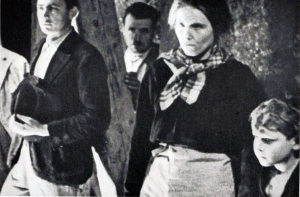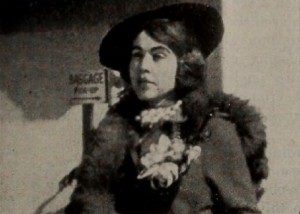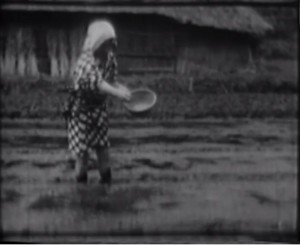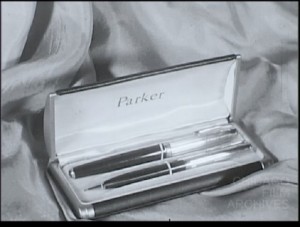
"a sogg. lungh. norm."/Fiction feature film
"Sacrificarsi, realizzato da Arrigo Colombo; aiuto direttore Ottorino Caramazza; scenografia di Brando Savelli, operatore Elio Luxardo. Come il precedente film di Arrigo Colombo, Alta Tensione, anche questo Sacrificarsi e a carattere episodico; il centro dell'azione e stavolta una miniera, che e stata completamente ricostruita nelle proporzioni necessarie allo svolgimento della trama. Il sacrificio è quello di un operaio; e il momento in cui lo trasportano con le gambe penzoloni dal carrello, fuori della galleria, di fronte agli sguardi della moglie e del figlioletto, e il momento più felice del film, in cui si riconosce che ormai Colombo ha raggiunto alcune qualità che per taluni aspetti possono essere definite professionali; Colombo ·mostra in più punti la sua abilita, e questa forse lo tradisce talora, specie quando egli perde il filo del racconto principale per illustrare motivi di contorno; ma in ciò forse egli e stato indotto dalla mancanza di un movente drammatico del soggetto che fosse giustificato da uno schema più complesso. I personaggi sono ben descritti e sopratutto piace il bambino con quel suo sfarfallio in contrasto col lavoro delta miniera."
—Il Ventuno 28 (Review of the G.U.F. of Venice), May 1935
"Self-Sacrifice (Sacrificarsi), directed by Arrigo Colombo; assistant director Ottorino Caramazza; set design by Brando Savelli; cameraman Elio Luxardo. Like Arrigo Colombo's previous film, High Tension, Making Sacrifices is also episodic in nature; the center of action this time is a mine, which has been completely rebuilt to proportions necessary for the development of the plot. The sacrifice is that of a worker, and the moment in which he is transported with his legs dangling from the trolley, out of the tunnel, in front of the eyes of his wife and small son, is the happiest moment of the film, in which we recognize that Colombo has attained certain qualities that in some respects can be called professional; Colombo shows in several points his ability, and this perhaps betrays him sometimes, especially when he loses the thread of the main story to elaborate the backdrop and contextual events, but to this perhaps he was tempted to do so is due to the lack of a dramatic incident in the plot that would have justified the more complex scheme. The characters are well-described and especially likable is the child with his flickering that contrasts with the work of the mine."
—Il Ventuno 28 (Review of the G.U.F. of Venice), May 1935
"Girl Guides from Queen Margaret's School collect scrap metal and other materials for the war effort" British Columbia Archives.
This film may also be known as Queen Margaret School Salvage Drive, World War Two.
"This film shows a newspaper delivery boy, Douglas Woodley, son of Charles Devenish Woodley, on his route." Library and Archives Canada.
"An outstanding example of what may be done with ordinary 16mm. equipment in the factory is to be found in The Story of Maytag, a black and white industrial film made by Fred Maytag, II. The problems of picturing the manufacture of washing machines in complete detail involved some tremendous lighting difficulties. Mr. Maytag handled these with ease, and throughout the film there is the conviction that the clear, clean photography scarcely could be improved. While the film was designed for use within the sales organization, the procedure of manufacture is so clearly pictured that it is not only comprehensible to the layman but interesting as well." Movie Makers, Dec. 1936, 548-549.

"A high-pressure advertising agency, rivalry within the firm, a switch of entries in a beauty contest and the effects thereof — these are the story ingredients out of which the Los Angeles 8mm. Club has fashioned an outstanding club film. Competent in all phases of movie production, from the smart opening titles to the corny romantics at the end, A Switch in Time is a hilarious cine satire of the foibles of big-time advertising. Seldom does a film of this type demonstrate so capably — in story, photography, direction, acting, editing and sound — the combined abilities of a group of enthusiastic movie makers." Movie Makers, Dec. 1953, 319-320.

"Documentary: On the life of rural rice farm families in Japan." National Archives.

"Short documentary about fountain pen repairs and the process of repairs within a fountain pen hospital. The film begins with a client handing over his pen to the receptionist. From there the pen goes to Robert "Doc" Davis, who performs a nine point check-up on the pen. This is followed by exploded views of various pen models, including the Schaeffer Triumph, Parker 51 and the Eversharp Skyline. Last, the film shows how gold lettering is used on both pends and leather goods. Outtake scenes of the pen hospital and its employees follows the film." Chicago Film Archives.
"The Toilers, a 150 ft. Kodacolor reel made by Arthur G. Greaves, demonstrates the continuity possibilities of Kodacolor, a much neglected aspect of amateur color movies. Men at work — in the harbors, along the seacoast and inland, caring for flocks and harvesting grain — is the motif of the picture, relieved by a few glimpses of men and children at play. The picture is distinguished by beautiful photography of consistent quality and by a smooth succession of moving compositions in color. These qualities, combined with a clear continuity, give the film much more unity than is usual with Kodacolor reels. This is one of the all too few Kodacolor films that may be viewed as a subject possessing an artistic purpose as a whole, rather than as a series of separate scenes and sequences. Its chief color triumph is, perhaps, in the scenes of the harvesting against the background of fields of golden grain." Movie Makers, Dec. 1931, 658.
"Brickett Bridge, Andover Maine was built in 1871 of native spruce lumber. It served its purpose well until 1948 when it was replaced with steel and concrete." oldfilm.org
"Item is a film production of Dr. Willinsky's trip to Trinidad with his wife, Sadie. Filmed in the form of a travelogue, Willinsky intersperses footage of landmarks and the local population with captions that provide information about the country and its culture. Included are shots of sites around Port-of-Spain, cathedrals, mosques, a cricket match, a cocao bean farm, and the local population carrying out their daily activities. Sadie is regularly spotted sight-seeing and interacting with locals." Ontario Jewish Archives.
Total Pages: 8